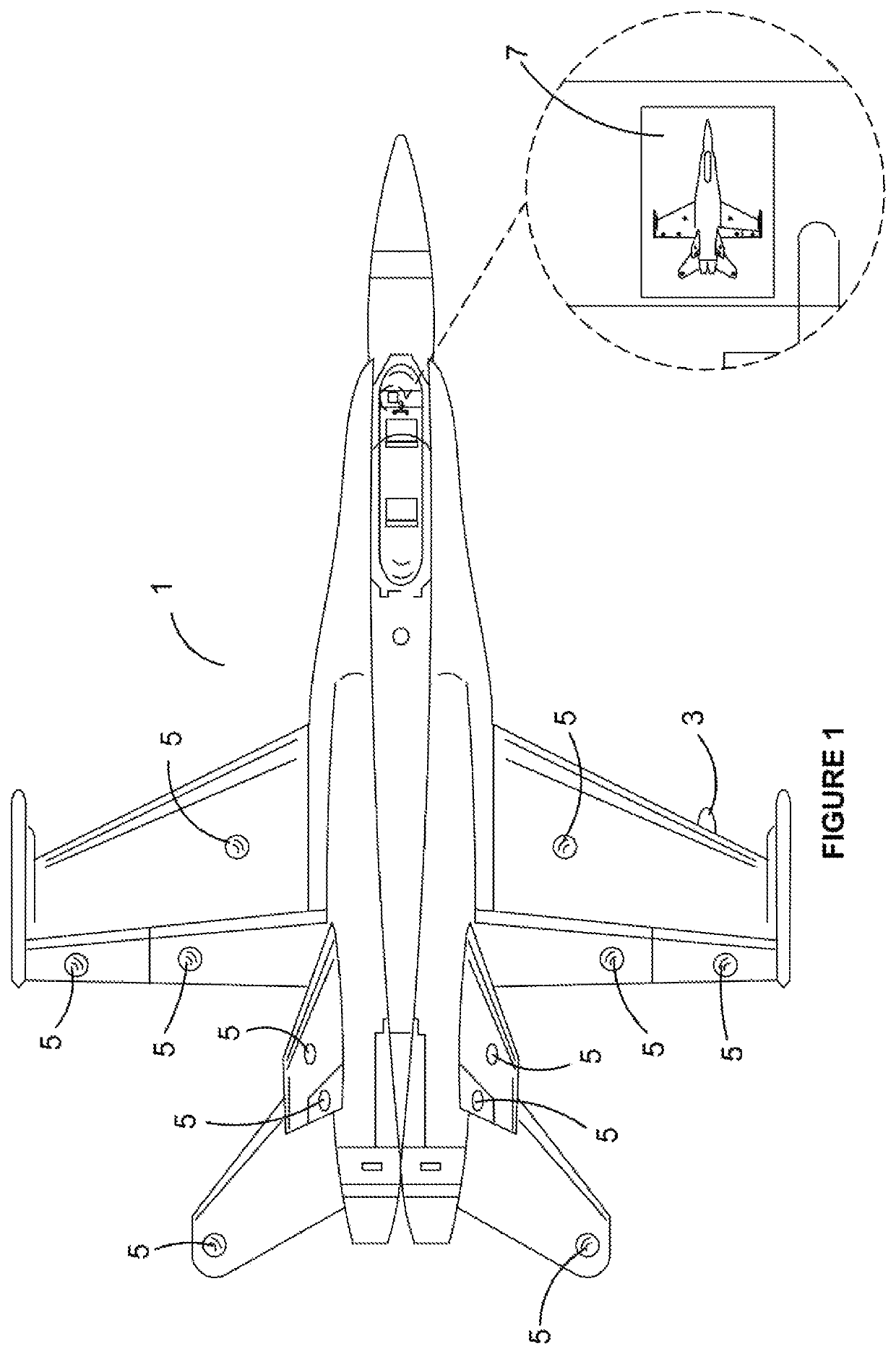Wireless sensor system for a vehicle
a sensor system and vehicle technology, applied in the field of wireless sensor systems, can solve the problems of limiting the locations where such non-wired sensors can be installed upon and/or within the vehicle, unable to reliably communicate in real-time over long distances at a sufficient data transfer rate, and achieving the effect of low profil
- Summary
- Abstract
- Description
- Claims
- Application Information
AI Technical Summary
Benefits of technology
Problems solved by technology
Method used
Image
Examples
Embodiment Construction
[0077]It must be noted that an aircraft has been chosen purely as an example of a suitable type of high performance vehicle. Any type of high performance vehicle is suitable for this invention.
[0078]In FIG. 1, we can see a schematic of the wireless sensor and telemetry system that is the subject of the present invention. to We can see the top view of an aircraft 1 that includes a gateway 3, in this embodiment carried under starboard wing, and a plurality of sensor nodes 5. The gateway 3 and each sensor node 5 is wirelessly connected together for two-way data communication. This two-way communication may be directly between an individual sensor node 5 and the gateway 3, or a cluster of sensor nodes 5 and the gateway 3. In this view we are also shown a cockpit mounted sensor system monitoring and management interface 7.
[0079]In FIG. 2 we are shown another schematic of the overall sensor system. The aircraft 1 has a plurality of sensor nodes 5 fitted to strategic positions on the airfr...
PUM
 Login to View More
Login to View More Abstract
Description
Claims
Application Information
 Login to View More
Login to View More - R&D
- Intellectual Property
- Life Sciences
- Materials
- Tech Scout
- Unparalleled Data Quality
- Higher Quality Content
- 60% Fewer Hallucinations
Browse by: Latest US Patents, China's latest patents, Technical Efficacy Thesaurus, Application Domain, Technology Topic, Popular Technical Reports.
© 2025 PatSnap. All rights reserved.Legal|Privacy policy|Modern Slavery Act Transparency Statement|Sitemap|About US| Contact US: help@patsnap.com



